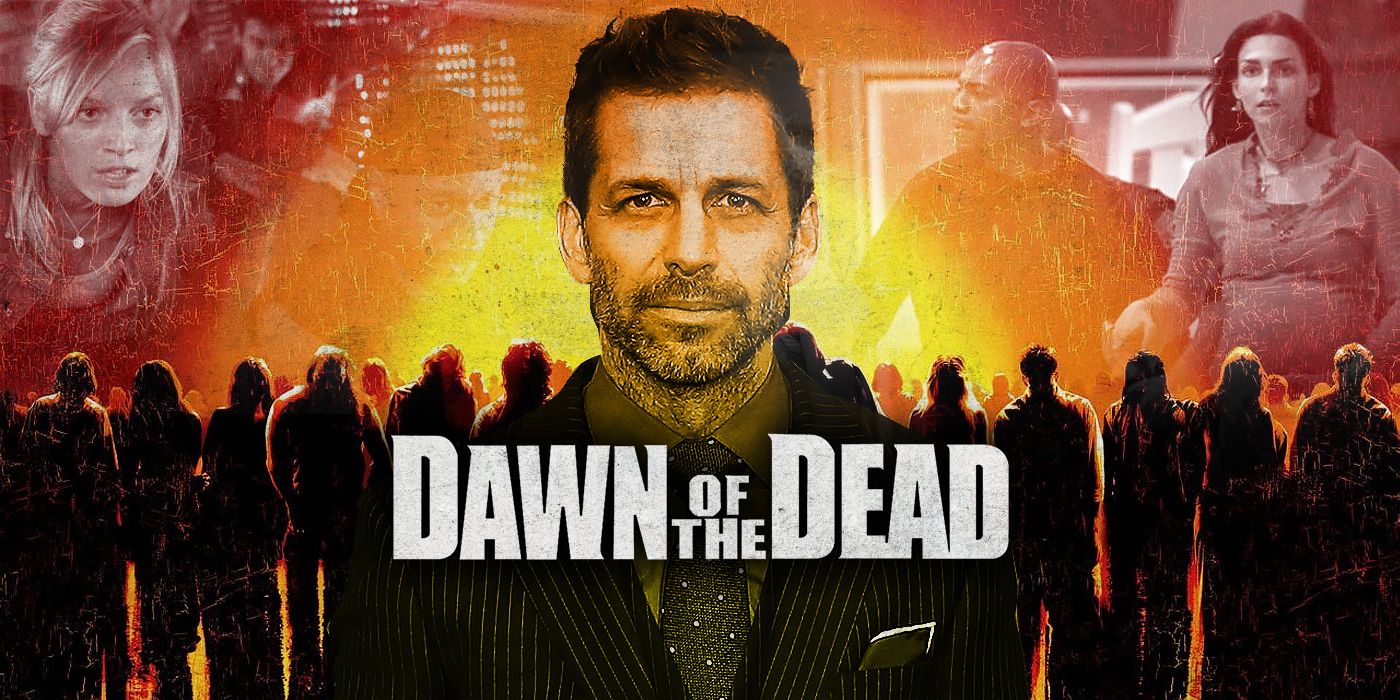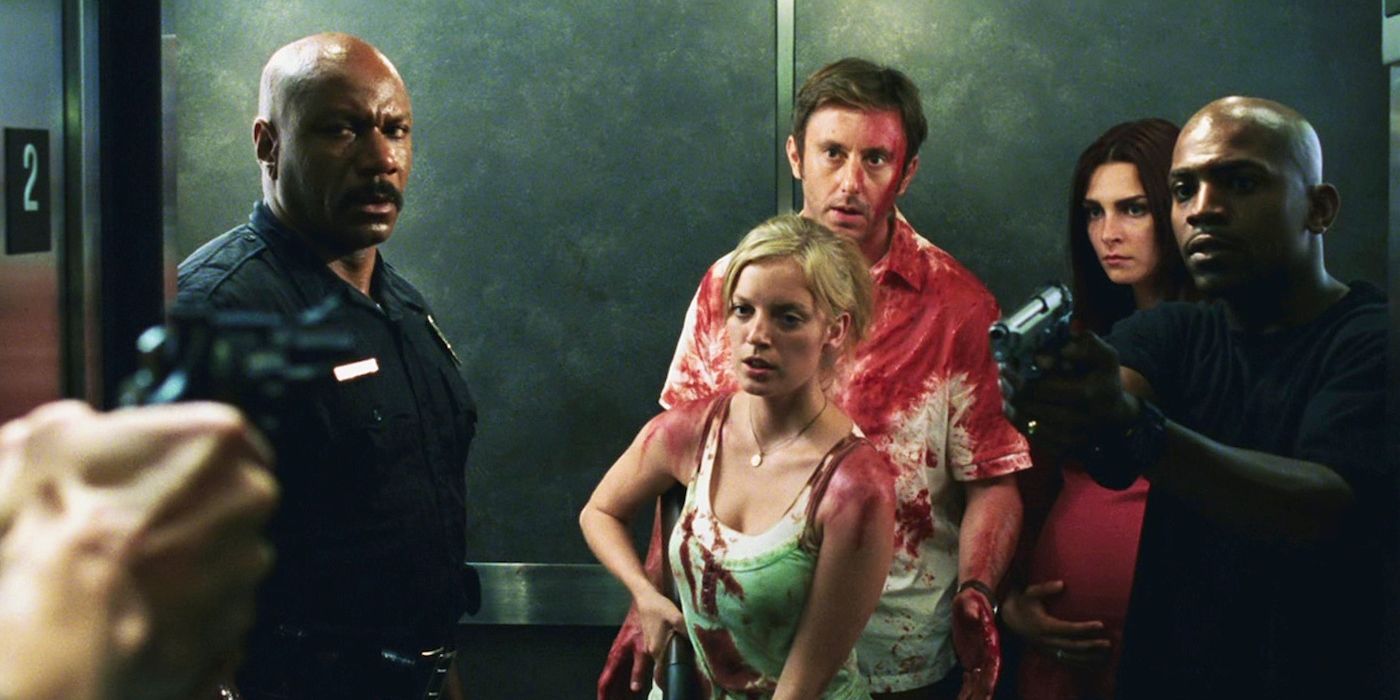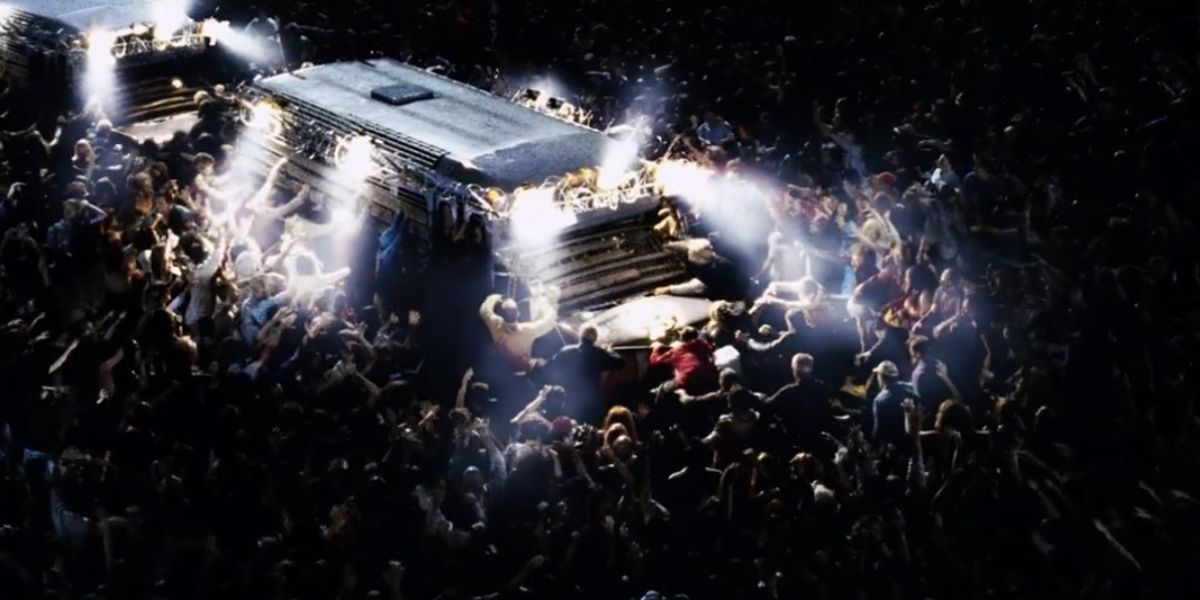In 2004, hotshot commercial director Zack Snyder made a major splash with his directorial debut, a remake of George A. Romero's bitingly satirical zombie flick Dawn of the Dead. Seventeen years later, Snyder returns to the genre with Netflix's Army of the Dead, and to say the filmmaker's career has been a "bit eventful" in the interim is understatement enough to spark its own apocalypse in the comments. Across nearly two decades, Snyder has become an auteur lightning rod, capable of sparking support and criticism with equally startling passion. He invented an entirely new subgenre of shirtlessness with the 2006 Frank Miller adaptation, 300; he brought Alan Moore and Dave Gibbons' "unfilmable" comic masterpiece Watchmen to vivid life in 2009; he was handed the keys to the DC Comics kingdom and built an Extended Universe several million miles away from its colorful Marvel counterpart, one populated by scowling god figures and Grecian tales of life and death. The last 17 Years of Snyder has been a lot, is what I'm saying, full of dramatic highs and lows, but when I think of a Zack Snyder triumph? I still think, first and foremost, of his beginning, of Dawn of the Dead, which remains the best, purest serving of Snyder's trademark mix of popcorn and blood
Snyder began his film career with his foot duct-taped to the gas pedal. Instead of steadily building tension, Snyder simply tosses the audience through a plate glass window from the jump; Dawn of the Dead's opening ten minutes is packed with some of the most electric visual storytelling that horror has seen in the past 20 years. After watching her adorable pre-teen next-door neighbor make a meal out of her husband's neck, nurse Ana (Sarah Polley) steps out her front door to see a small Milwaukee suburb gone mad. Snyder and cinematographer Matthew F. Leonetti immediately place you in Ana's shoes with a pan shot for the ages, the camera over Polley's shoulder taking in at least three separate dioramas of chaos taking place on a usually quiet suburban street.
Snyder keeps you firmly planted in the mayhem, strapping the camera to the hood of a car as Ana desperately tries to drive away—the type of showy but exhilarating trick that screams exciting first-time filmmaker zombies and fleeing survivors alike ping-ponging off the vehicle. The shot is pointed at the driver's seat, and the rearview is all fire and bedlam. When Ana crashes headlong into a tree just ten minutes (!) into the movie, we also crash into the opening credits, a terrifyingly jarring montage of unsure news footage, religious fervor, and the living being overtaken by the dead, all set to Johnny Cash's haunting "The Man Comes Around."
In those first ten minutes, Snyder the Filmmaker arrived fully formed, a Xenomorph bursting from a chest with six-pack abs holding a bazooka. A good portion of Dawn of the Dead's opening would become Snyder trademarks, like complex exposition via opening credits (he'd perfect this on Watchmen) or on-the-nose music choices that are so earnest it's endearing. But more importantly, it establishes something that remains true to this day: Snyder is one hell of a visual storyteller. Subtly be damned, the man can compose an image, whether it's a wordless escape from a zombie-filled hellworld or just a particularly aesthetically pleasing blood-splatter, Snyder's eye for the dramatic image is the key to his following; it makes his work, be it zombie or superhero or otherwise, always feel Bigger Than.
But the thing that separates Dawn of the Dead is that it takes Snyder's biggest strengths and contains them, like bottled adrenaline. The script by James Gunn—lightyears away from Guardians of the Galaxy, still in provocateur mode—isn't a beat-for-beat remake of Romero's 1978 film, but it borrows the concept of survivors hunkering down in a shopping mall as the undead gather outside. Chief among them is Ana, police officer Kenneth (Ving Rhames), Andre (Mekhi Phifer) and his pregnant wife Luda (Inna Korobkina), and professional dickhead Steve (Ty Burrell). The film is able to simply establish character by having personalities bounce off each other under high stress, freeing up Snyder to play around with dynamic images. Sometimes it's just a simple bit of weirdness, like an elevator door constantly closing between a gun standoff, ratcheting the tension with every ding. Often, it's much larger; there's one particularly memorable shot of the survivors standing on the mall roof, the camera pulled way the hell back, emphasizing the absolute island-in-the-middle-of-the-ocean levels of isolated these people suddenly are. Later, Snyder makes that metaphor a tad more literal in the film's most striking image, as zombies swarm the survivor's makeshift tank like ocean waves, the vehicle's lights looking like a lost ship in the night.
That's the thing about Snyder: Even what I might consider the bottom tier of his filmography always contains at least one—and, usually, it's more like a handful—truly jaw-dropping image worthy of a splash page. Superman (Henry Cavill) descending from a golden hour sky to rescue flood victims in Dawn of Justice. Aquaman (Jason Momoa) walking down a dock through raging waves in reverent slow-mo in Justice League. Hell, even Sucker Punch, a movie I genuinely believe deserves its place in the cultural trash heap, works on a get-high-and-watch-it-on-mute level. (An important, undervalued cinematic subgenre.) Where post-Dawn of the Dead Zack Snyder has often struggled is cohering the dark, mythic images in his head into a coherent or relatable story. His skills lie in images and deconstruction, which didn't work for constructing an entire cinematic universe; the story of the early-days DCEU is of a gorgeous, imposing Gothic edifice with not a single human soul living inside.
But with Dawn of the Dead, when Snyder was all buzzing ambition years away from becoming Hollywood's most divisive world-builder, the walled-in nature of its chaos allowed room only for Snyder's strengths. We can quibble until the actual apocalypse kicks off about "fast zombies"—I'm pro-sprinting!—but Dawn of the Dead remains Zack Snyder's best movie because it's still the smallest canvas he's been asked to gleefully destroy. And it's not like the unmistakable personality that's run through his entire career is absent, either. There aren't many weeks where I don't think about the ending of Dawn of the Dead at least once. Not just the actual ending, with Jake Weber's Michael watching the survivors sail away alone on a dock with a zombie bite and a pistol in his hand, the bleakest final into-the-sunset shot of all time. No, I mean the mid-credits scene, shot with a hand-held camera, in which every character you thought would make it gets overrun by zombies, a downer of a conclusion that smash-cuts into "Down with the Sickness" by Disturbed. You simply must laugh at the moxie. Zack Snyder gave us all the clues right upfront. Although it doesn't seem like the scale of his ideas will shrink anytime soon—he's recently hinted at a 300 trilogy-ender, a King Arthur epic, and a mystical George Washington adventure—I do wish he'd at least channel the smaller vibe of Dawn of the Dead, absolute chaos surrounding a definite, recognizable core of humanity.



